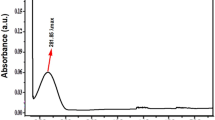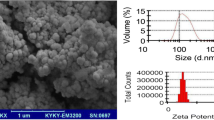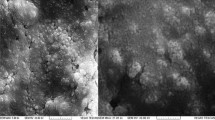Abstract
Ciprofloxacin (Cipro) is a broad spectrum synthetic antibiotic that can be used to treat many bacterial infections. But the rising antibiotic resistance has limited its use. Combining it with a natural antimicrobial compound could enhance the therapeutic value as well as effectiveness against resistant bacteria. In the present work, a nanoemulsion loaded with polyphenon 60 and Cipro was analyzed by using different assays such as microtiter dish biofilm assay to check the antibacterial potential, 3-(4, 5-dimethylthiazol-2-yl)-2, 5-diphenyltetrazolium bromide (MTT assay) to analyze cyto-toxicity of formulation, adhesion assay and confocal laser microscopy to identify the mechanism of antibacterial effect of the formulation. Further, growth of Escherichia coli in the presence of nanoemulsion was also recorded. The antibacterial study showed that the nanoemulsion inhibited the formation of biofilm with average % inhibition of 89% as compared to aqueous formulation showing average % inhibition of 67% at their minimum inhibitory concentrations. The cell toxicity studies confirmed that the nano formulation was not toxic against vero cells with % viability of ~ 78% than the aqueous solution ~ 61% and placebo ~ 37%. The nanoemulsion was also able to inhibit the bacterial adhesion to mammalian cells and growth of E. coli at the 2nd hour of inoculation. Confocal laser scanning microscopy showed that the formulation exert its antibacterial activity by disrupting the bacterial cell membrane. Hence, the results concluded that the developed nanoemulsion loaded with polyphenon 60 and Cipro had enhanced antibacterial activity and it could further be explored for the management of urinary tract infection.





Similar content being viewed by others
References
Aarnisalo K, Lundén J, Korkeala H, Wirtanen G (2007) Susceptibility of Listeria monocytogenes strains to disinfectants and chlorinated alkaline cleaners at cold temperatures. LWT Food Sci Technol 40:1041–1048
Baveja JK, Willcox MDP, Hume EBH, Kumar N, Odell R, Poole-Warren LA (2004) Furanones as potential anti-bacterial coatings on biomaterials. Biomaterials 25:5003–5012
Blondeau JM (2004) Fluoroquinolones: mechanism of action, classification, and development of resistance. Surv Ophthalmol 49:S73–S78
Burmølle M, Thomsen TR, Fazli M, Dige I, Christensen L, Homøe P, Tvede M, Nyvad B, Tolker-Nielsen T, Givskov M, Moser C (2010) Biofilms in chronic infections—a matter of opportunity—monospecies biofilms in multispecies infections. FEMS Immunol Med Microbiol 59:324–336
Cho KY, Chung TW, Kim BC, Kim MK, Lee JH, Wee WR, Cho CS (2003) Release of ciprofloxacin from poloxamer-graft-hyaluronic acid hydrogels in vitro. Int J Pharm 260:83–91
Dillen K, Vandervoort J, Van den Mooter G, Ludwig A (2006) Evaluation of ciprofloxacin-loaded Eudragit® RS100 or RL100/PLGA nanoparticles. Int J Pharm 314:72–82
DiTizio V, Karlgard C, Lilge L, Khoury AE, Mittelman MW, DiCosmo F (2000) Localized drug delivery using crosslinked gelatin gels containing liposomes: factors influencing liposome stability and drug release. J Biomed Mater Res 51:96–106
Egger SF, Ruckhofer J, Alzner E, Hell M, Hitzl W, Huber-Spitzy V, Grabner G (2001) In vitro susceptibilities to topical antibiotics of bacteria isolated from the surface of clinically symptomatic eyes. Ophthalmol Res 33:117–120
Flemming HC, Wingender J (2010) The biofilm matrix. Nat Rev Microbiol 8:623–633
Gnanadhas DP, Elango M, Datey A, Chakravortty D (2015) Chronic lung infection by Pseudomonas aeruginosa biofilm is cured by L-Methionine in combination with antibiotic therapy. Sci Rep 5:16043
Gupta PD, Birdi TJ (2017) Development of botanicals to combat antibiotic resistance. J Ayurveda Integr Med 8:266–275
Gupta S, Bansal R, Maheshwari D, Ali J, Gabrani R, Dang S (2014) Development of a nanoemulsion system for polyphenon 60 and cranberry. Adv Sci Lett 20:1683–1686
Halnor VV, Pande VV, Borawake DD, Nagare HS (2018) Nanoemulsion: a novel platform for drug delivery system. J Mater Sci Nanotechnol 6:104
Hamouda T, Baker JR (2000) Antimicrobial mechanism of action of surfactant lipid preparations in enteric gram-negative bacilli. J Appl Microbiol 89:397–403
Hegge AB, Bruzell E, Kristensen S, Tonnesen HH (2012) Photoinactivation of Staphylococcus epidermidis biofilms and suspensions by the hydrophobic photosensitizer curcumin—effect of selected nanocarrier: studies on curcumin and curcuminoides XLVII. Eur J Pharm Sci 47:65–74
Huh AJ, Kwon YJ (2011) Nanoantibiotics: a new paradigm for treating infectious diseases using nanomaterials in the antibiotics resistant era. J Controlled Release 156:128–145
Huo C, Wan SB, Lamet WH (2008) The challenge of developing green tea polyphenols as therapeutic agents. Inflammopharmacology 16:248–252
Hwang YY, Ramalingam K, Bienek DR, Lee V, You T, Alvarez R (2013) Antimicrobial activity of nanoemulsion in combination with cetylpyridinium chloride in multidrug-resistant Acinetobacter baumannii. Antimicrob Agents Chemother 57:3568–3575
Jazani NH, Zartoshti M, Shahabi MS, Yekta Z, Nateghi S (2007) Evaluation of the synergetic effect of water soluble extracts of green tea (Camellia sinensis) on the activity of ciprofloxacin in urinary isolated E. coli. J Biol Sci 7:1500–1503
Kaur A, Kapoor N, Gupta S, Tyagi A, Sharma RK, Ali J, Gabrani R, Dang S (2018) Development and characterization of green tea catechins and ciprofloxacin loaded nanoemulsion for intravaginal delivery to treat urinary tract infection. Indian J Pharm Sci 80:442–452
Kim SH, Lee HS, Ryu DS, Choi SJ, Lee DS (2011) Antibacterial activity of silver-nanoparticles against Staphylococcus aureus and Escherichia coli. Korean J Microbiol Biotechnol 39:77–85
Kumar L, Chhibber S, Harjai K (2013) Zingerone inhibit biofilm formation and improve antibiofilm efficacy of ciprofloxacin against Pseudomonas aeruginosa PAO1. Fitoterapia 90:73–78
Lee JH, Shim JS, Chung MS, Lim ST, Kim KH (2009) In vitro anti-adhesive activity of green tea extract against pathogen adhesion. Phytother Res 23:460–466
Lehtinen J, Nuutila J, Lilius EM (2004) Green fluorescent protein-propidium iodide (GFP-PI) based assay for flow cytometric measurement of bacterial viability. Cytom Part A 60:165–172
Letourneau J, Levesque C, Berthiaume F, Jacques M, Mourez M (2011) In vitro assay of bacterial adhesion on to mammalian epithelial cells. J Vis Exp 51:2783
Mao Z, Ma L, Gao C, Shen J (2005) Preformed microcapsules for loading and sustained release of ciprofloxacin hydrochloride. J Controlled Release 104:193–202
Monte J, Abreu AC, Borges A, Simoes LC, Simoes M (2014) Antimicrobial activity of selected phytochemicals against Escherichia coli and Staphylococcus aureus and their biofilms. Pathogens 3:473–498
Pommier Y, Leo E, Zhang H, Marchand C (2010) DNA topoisomerases and their poisoning by anticancer and antibacterial drugs. Chem Biol 17:421–433
Ramalingam K, Amaechi BT, Rawls HR, Valerie AL (2012) Antimicrobial activity of nanoemulsion on cariogenic planktonic and biofilm organisms. Arch Oral Biol 57:15–22
Rodrigues IA, Ramos ADS, Falcão DQ, Ferreira JLP, Basso SL, Silva JRDA, Amaral ACF (2018) Development of nanoemulsions to enhance the antileishmanial activity of Copaifera paupera oleoresins. BioMed Res Int 2018:1–9
Saleem M, Nazir M, Ali SM, Hussain H, Lee YS, Ria N, Jabbar A (2010) Antimicrobial natural products: an update on future antibiotic drug candidates. Nat Prod Rep 27:238–254
Sharma R, Reddy VKL, Prashant GM, Ojha V, Kumar NVG (2014) Antimicrobial and anti-adherence activity of various combinations of coffee-chicory solutions on Streptococcus mutans: an in-vitro study. J Oral Maxillofac Pathol 18:201–206
Singh S, Singh SK, Chowdhury I, Singh R (2017) Understanding the mechanism of bacterial biofilms resistance to antimicrobial agents. Open Microbiol J 11:53
Teixeira PC, Leite GM, Domingues RJ, Silva J, Gibbs PA, Paulo J (2007) Antimicrobial effects of a microemulsion and a nanoemulsion on enteric and other pathogens and biofilms. Int J Food Microbiol 118:15–19
Wang A, Wang Q, Kudinha T, Xiao S, Zhuo C (2016) Effects of fluoroquinolones and azithromycin on biofilm formation of Stenotrophomonas maltophilia. Sci Rep 6:29701
Yam TS, Shah S, Hamilton-Miller JM (1997) Microbiological activity of whole and fractioned crude extracts of tea (Camellia sinensis) and of tea components. FEM Microbiol Lett 152:169–174
Acknowledgements
The authors would like to thank Jaypee Institute of Information Technology, Noida, UP (India), for providing infrastructural support. We are also thankful to Department of Biotechnology, Government of India for providing financial support for conducting this work (DBT Project No. BT/PR7215/NNT/28/654/2013).
Author information
Authors and Affiliations
Corresponding author
Ethics declarations
Ethical statement
This article does not contain any studies with human participants or animals performed by any of the authors.
Conflict of interest
Atinderpal Kaur has no conflict of interest. Reema Gabrani has no conflict of interest. Shweta Dang has no conflict of interest.
Additional information
Publisher's Note
Springer Nature remains neutral with regard to jurisdictional claims in published maps and institutional affiliations.
Rights and permissions
About this article
Cite this article
Kaur, A., Gabrani, R. & Dang, S. Antimicrobial activity of nanoemulsion encapsulated with polyphenon 60 and ciprofloxacin for the treatment of urinary tract infection. ADV TRADIT MED (ADTM) 20, 581–589 (2020). https://doi.org/10.1007/s13596-020-00483-1
Received:
Accepted:
Published:
Issue Date:
DOI: https://doi.org/10.1007/s13596-020-00483-1




